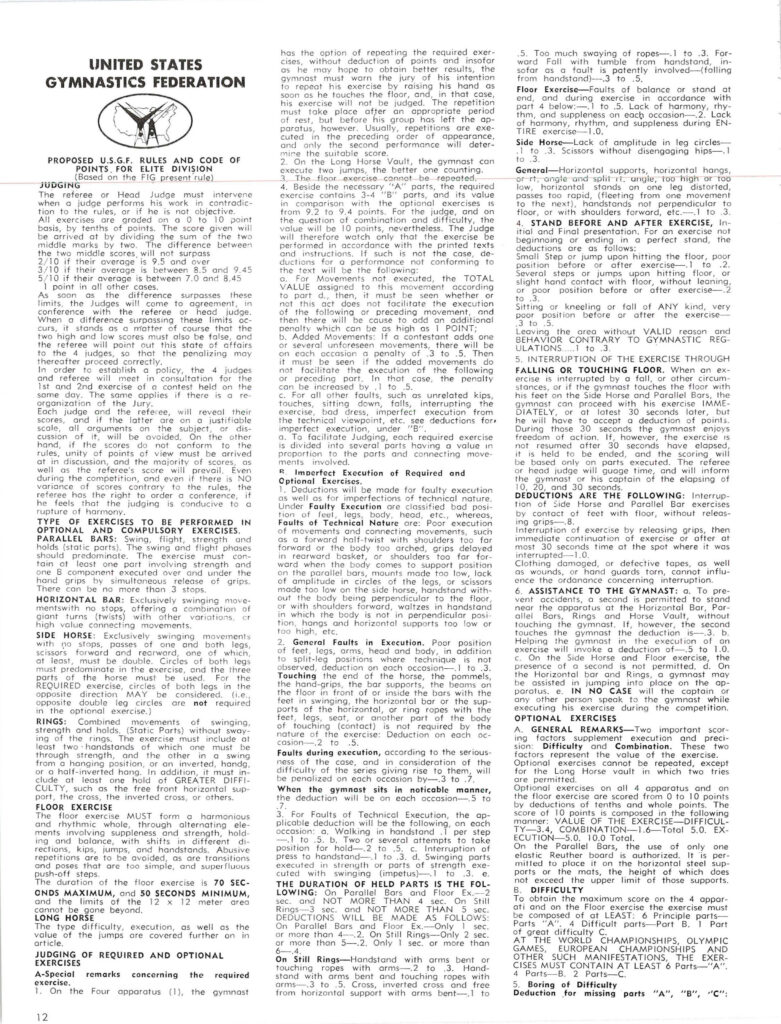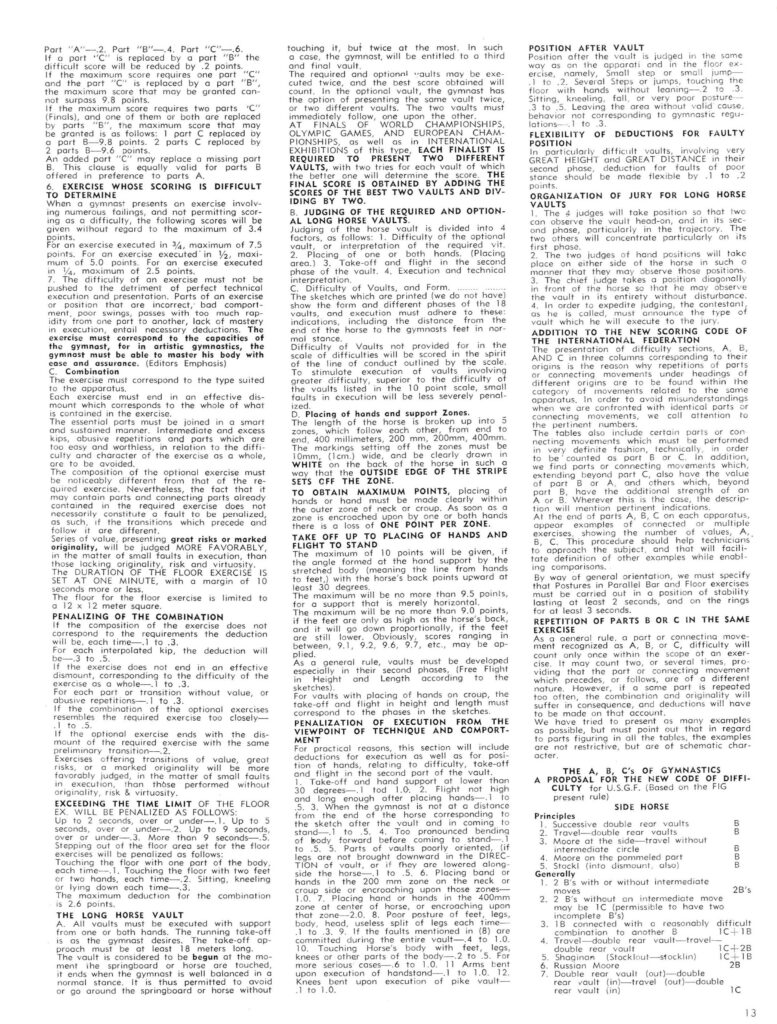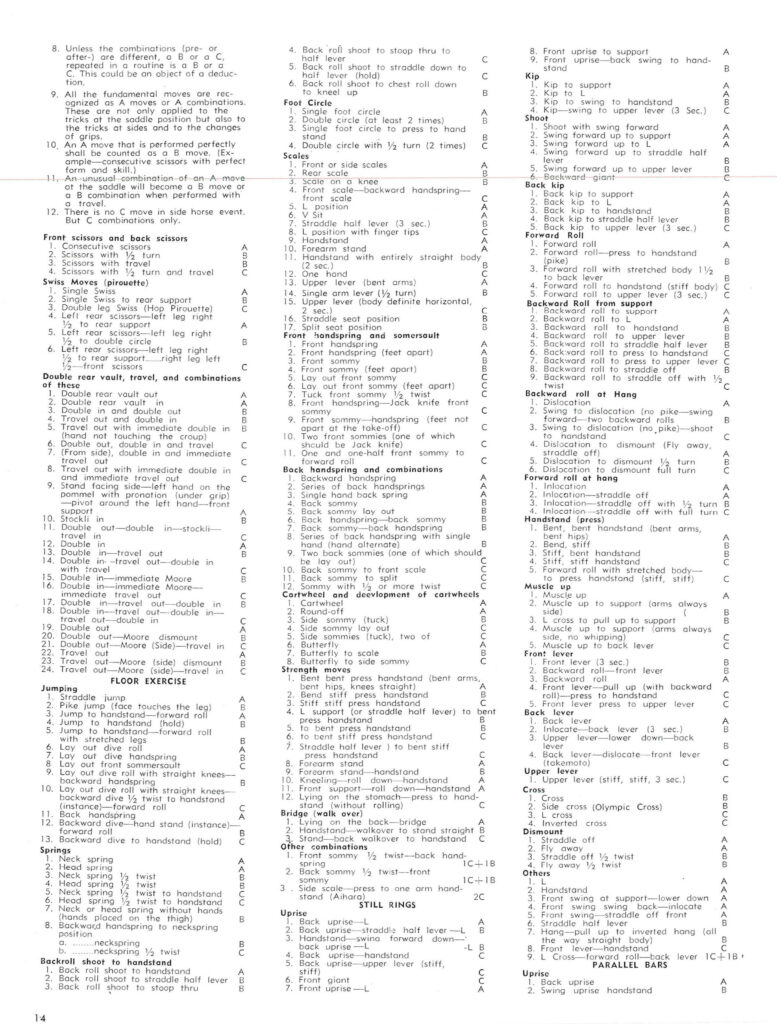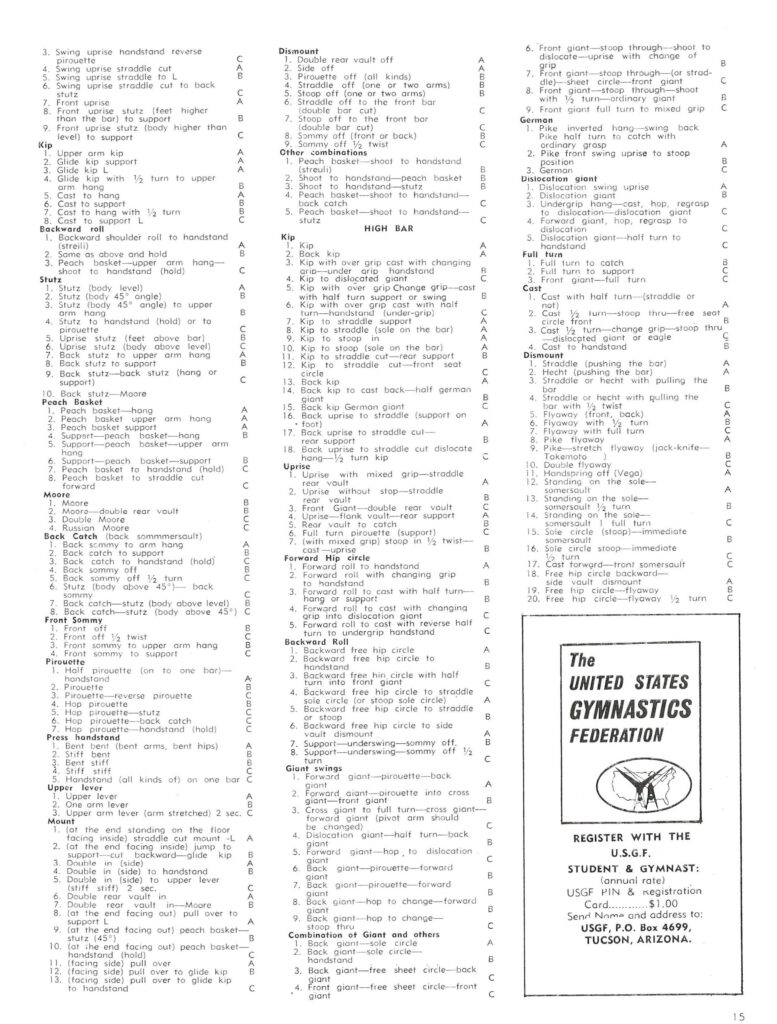A quick recap: At the 1964 Olympics, Endo Yukio won the all-around competition after a questionable pommel horse routine. He had 3 major breaks during his routine. Yet, he received a 9.10, and gymnastics fans were outraged about the overscoring.
Author: Gymnastics History
From the women’s competition at the 1964 Tokyo Olympics, we head to the men’s competition.
Spoiler alert: Once again, there was a big judging controversy that sparked debate about abandoning the 10.0.
In preparation for the 2021 Tokyo Olympics, let’s look back at the 1964 Tokyo Olympics, starting with the women’s competition.
1964: The Men’s Code of Points
Leading up to the Tokyo Olympics, the FIG republished its Code of Points. You can download the entire 1964 Code of Points at the bottom of this post.
Here are a few of the highlights.
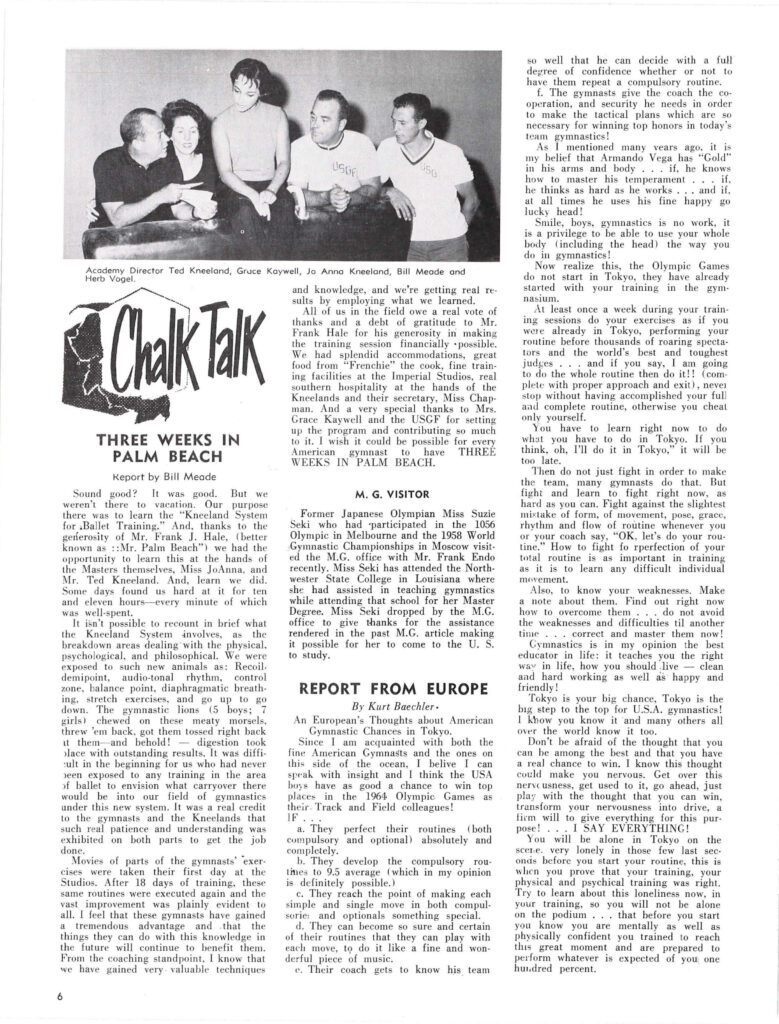
In the “Chalk Talk” section of the 1963 September issue of Modern Gymnast, Kurt Bächler, who became known as the “Father of Trampolining,” wrote an entire plan for the Americans to succeed in Tokyo.
One of the items: “They develop the compulsory routines to 9.5 average (which in my opinion is definitely possible
9.5 average? Simple enough, right?
Umm… Have you seen the 1964 compulsories? They were called “perhaps the most difficult ever.” (Modern Gymnast, March 1964)
(To be fair, if you asked any elite gymnast who competed compulsories, they would tell you that their quad’s compulsories were the most challenging.)
If you’re reading this blog, you’re a gym nerd. But just how much of a gym nerd are you? Take this quiz to find out.
We’ve already discussed the men’s performances at the 1962 World Championships. It’s now time to discuss the women’s.
1962: Questioning the 10.0
A quick recap: The event finals in Prague were delayed 30 minutes because the crowd protested Cerar’s score. They thought that Cerar of Yugoslavia should have scored higher than Shakhlin of the Soviet Union.
After a long conference, the judges raised Cerar’s score from a 9.8 to a 9.9, giving him the gold medal in the event.
Here’s a letter to the editor of the Modern Gymnast in response. It’s the one called “Subjective” at the bottom of the first column. (The letter about the judging “computer” is also fun.)
Since my first blog post started in 1962, let’s continue down the 1962 rabbit hole by doing a Cliffs Notes version of the 1962 World Championships for the men.
The first blog on this site starts in 1962 because some gymnastics fans want to burn down USA Gymnastics. In the unlikely event that happens, it would not be the first time that the national governing body for gymnastics would be overthrown.
In 1962, the United States Gymnastics Federation was formed in an effort to replace the AAU as the official governing body of gymnastics in the United States, and I thought that it would be fun to revisit that history.
What follows are Cliffs Notes. If you want to know more, check out A History of the Development of the United States Gymnastics Federation by Richard Edd Laptad. USA Gymnastics also has its own timeline here.
